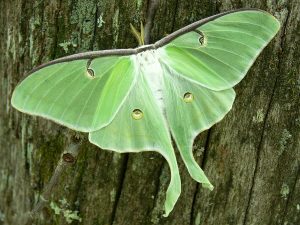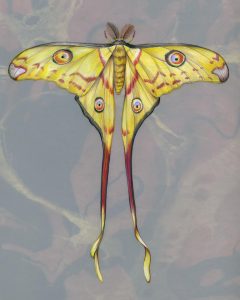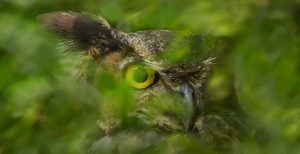 The Yogabliss, Two Rivers/RiverTree Yoga on-line Moving into Meditation classes met this morning. Today we contemplated the ways we see – always through the lens of our conditioning.
The Yogabliss, Two Rivers/RiverTree Yoga on-line Moving into Meditation classes met this morning. Today we contemplated the ways we see – always through the lens of our conditioning.
We humans don’t see a direct representation of external reality. We see a translation formed by our eyes and minds. We explored seeing with our hearts.
Mary Oliver’s poem, Luna, invited us into a tender meeting with a Luna moth. She describes her open-mindedness and the freedom of “not knowing enough about anything.” Sometimes our “knowing” gets in the way of clear seeing.
In her book, The Fruitful Darkness, Roshi Joan Halifax describes the many creaturely voices that require a certain humility to be heard and understood. Can we see clearly without knowing we are part of a greater living web?
In her poem, Seeing Ourselves Cleary, Lauren Bowmen reminds us how we need many perspectives to see clearly.
Can you meet this experience of being alive, openly . . . honestly? Can you let yourself be naked to the truth of who you are in this moment? There are so many ways we don’t know ourselves. We don’t honor or acknowledge how we feel . . . We can live wholly unaware of our deeper inclinations – the biases that filter the way we see ourselves and the world. In practicing mindfulness we are paying attention in a nonjudgmental way . . . in a kind and interested way . . . We can notice when the mind becomes unbalanced or judgmental . . . when it is biased for or against something . . . We can realize we are not neutral observers.
 In looking deeply we encounter the attitudes and the thought patterns that inform our judgments . . . We catch the silvery flash of associations in memories. We can see our bias in the light of loving awareness. We can realize that we don’t really know what we were once so certain about. We can meet our uncertainties and our views with kindness and humility. We learn to see and our world expands.
In looking deeply we encounter the attitudes and the thought patterns that inform our judgments . . . We catch the silvery flash of associations in memories. We can see our bias in the light of loving awareness. We can realize that we don’t really know what we were once so certain about. We can meet our uncertainties and our views with kindness and humility. We learn to see and our world expands.
We come to understand our humanness . . . We are unaware of so much of our experience. We come back to the present moment not knowing, in the spirit of caring curiosity again and again. In this way, we learn to see with our head and heart. We are there, ready to receive whatever arises . . . like moving quietly along a forest path and encountering creaturely beings. We stop – time stops – we share a moment of meeting . . . and are changed by it.
Poet Mary Oliver describes such a meeting in her poem about a moth, Luna:
In the early curtains
of the dusk
it flew,
a slow galloping
This way and that way
through the trees
and under the trees.
I live
in the open mindedness
of not knowing enough
about anything
 It was beautiful.
It was beautiful.
It was silent.
It didn’t even have a mouth.
But it wanted something,
it had a purpose
and a few precious hours
to find it,
and I suppose it did.
The next evening
it lay on the ground
like a broken leaf
and didn’t move,
which hurt my heart
which is another small thing
that doesn’t know much.
When this happened it was about
the middle of summer,
which also has its purposes and only so many precious hours.
How quietly,
and not with any assignment from us,
or even a small hint
of understanding,
everything that needs to be done
is done.
We can rest here . . . our body resting on Earth’s body. . . We can remember Mary Oliver’s words about the beautiful luna moth . . . and “. . . live in the open mindedness of not knowing enough about anything. . . “ Realizing how much we don’t know is humbling. Humbling opens our hearts and minds. We become fertile ground for meeting and understanding one another.
In her book, The Fruitful Darkness, Roshi Joan Halifax writes:
 Speaking in creation’s tongues, hearing creation’s voices, the boundary of our soul expands. Earth has many, many voices. Those who understand that Earth is a living being know this because they have translated themselves to the humble grasses and old trees. They know that Earth is a community that is constantly talking to itself, a communicating universe and whether we know it or not, we are participating in the web of this community.
Speaking in creation’s tongues, hearing creation’s voices, the boundary of our soul expands. Earth has many, many voices. Those who understand that Earth is a living being know this because they have translated themselves to the humble grasses and old trees. They know that Earth is a community that is constantly talking to itself, a communicating universe and whether we know it or not, we are participating in the web of this community.
Right now, you can reflect on what it is like to meet someone for the first time. Recalling the circumstances: where you were, who you were with . . . what the person looked like . . . whether you shook hands or stood apart . . . How did you meet them? What were your inner responses? What arose spontaneously in the moment?
An d now remember a time where you encountered a more than human creature . . . a deer on the path . . . an eagle roosting over the water . . . What was this encounter like? Were you curious . . . excited . . . or afraid? Can you let yourself be interested in what arose spontaneously in each of these meetings? Can you offer yourself compassion for any difficulties that arose? Can you celebrate your ability to see knowing it may be unclear? We can’t see our blind spots and we do the best we can.
d now remember a time where you encountered a more than human creature . . . a deer on the path . . . an eagle roosting over the water . . . What was this encounter like? Were you curious . . . excited . . . or afraid? Can you let yourself be interested in what arose spontaneously in each of these meetings? Can you offer yourself compassion for any difficulties that arose? Can you celebrate your ability to see knowing it may be unclear? We can’t see our blind spots and we do the best we can.
In our practice, we are learning to transform bias. We begin by recognizing it within ourselves and in the reflections in the eyes of others. We turn to trusted friends and share perspectives. We step outside our familiar circles to see how others live and to listen to the others’ views. Like Lauren Bowmen describes in her poem,
Seeing Ourselves Clearly
 It’s difficult to take in the entirety of something
It’s difficult to take in the entirety of something
when you are standing inside of it.
Valleys are best seen from peaks.
Mountains from their bases.
The ocean from the shore.
Perhaps this is why we rely on other’s eyes
to see ourselves clearly.
Perhaps this is why we struggle to wholly view
who we are.
We can meet our struggles with mindfulness and loving kindness. They are worthy struggles as Oren Jay Sofer writes in his essay, Transforming Bias:
. . . .the more deeply we understand ourselves the more compassion we have for others. Let us each, then seek to understand our own hearts and minds, to speak and act from our deepest truth, and to serve the healing and freedom of our shared planet.

